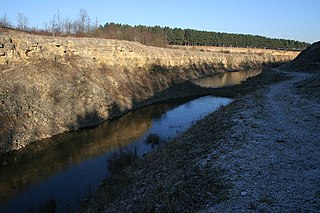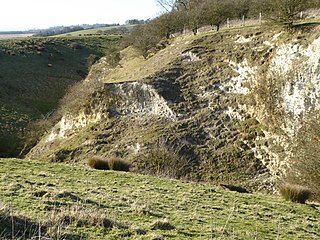| Site of Special Scientific Interest | |
 | |
| Area of Search | West Sussex |
|---|---|
| Grid reference | TQ 338 354 [1] |
| Interest | Geological |
| Area | 0.2 hectares (0.49 acres) [1] |
| Notification | 1999 [1] |
| Location map | Magic Map |
Turners Hill SSSI is a 0.2-hectare (0.49-acre) geological Site of Special Scientific Interest in Turners Hill in West Sussex. [1] [2] It is a Geological Conservation Review site. [3]

A Site of Special Scientific Interest (SSSI) in Great Britain or an Area of Special Scientific Interest (ASSI) in the Isle of Man and Northern Ireland is a conservation designation denoting a protected area in the United Kingdom and Isle of Man. SSSI/ASSIs are the basic building block of site-based nature conservation legislation and most other legal nature/geological conservation designations in the United Kingdom are based upon them, including national nature reserves, Ramsar sites, Special Protection Areas, and Special Areas of Conservation. The acronym "SSSI" is often pronounced "triple-S I".

Turners Hill is a village and civil parish in the Mid Sussex District of West Sussex, England. The civil parish covers an area of 1,390 hectares, and has a population of 1,849 increasing to 1,919 at the 2011 Census.

West Sussex is a county in the south of England, bordering East Sussex to the east, Hampshire to the west and Surrey to the north, and to the south the English Channel.
This former quarry exposed the Tunbridge Wells Sand Formation, part of the Hastings Beds, which dates to the Early Cretaceous between about 140 and 100 million years ago. It provided excellent three dimensional sections through the Ardingly Sandstone Member of the Formation. [4]
The Tunbridge Wells Sand Formation is a geological unit which forms part of the Wealden Group and the uppermost and youngest part of the unofficial Hastings Beds. These geological units make up the core of the geology of the Weald in the English counties of West Sussex, East Sussex and Kent.
The Hastings Beds is a geological unit that includes interbedded clays, silts, siltstones, sands and sandstones in the High Weald of southeast England. These strata make up the component geological formations of the Ashdown Formation, the Wadhurst Clay Formation and the Tunbridge Wells Sand Formation. The term 'Hastings Beds' has been superseded and the component formations are included in the Wealden Group.
The Early Cretaceous or the Lower Cretaceous, is the earlier or lower of the two major divisions of the Cretaceous. It is usually considered to stretch from 146 Ma to 100 Ma.
The site is private land with no public access. The quarry has been filled in and no geology is visible.


















